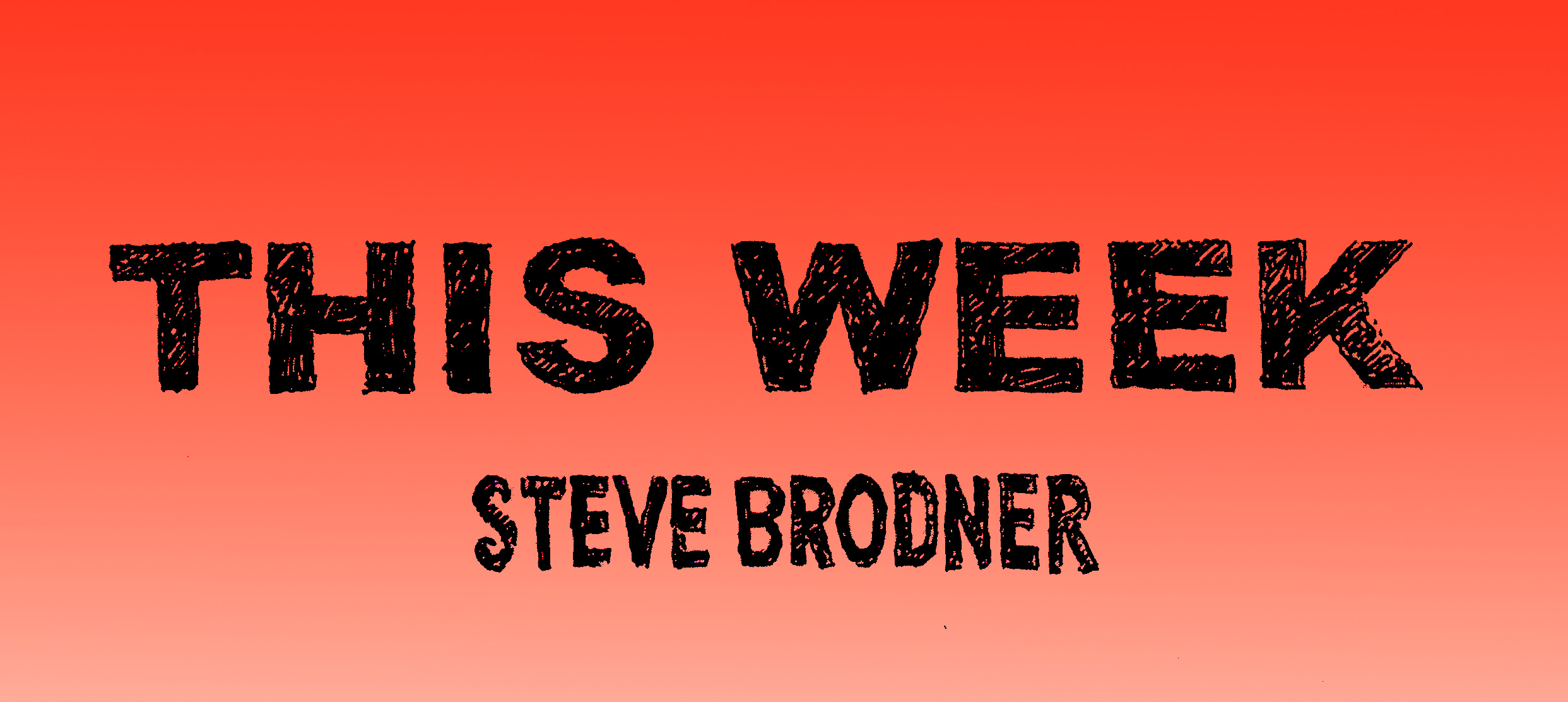/
October 27, 2023
Leonardo DiCaprio Is Just the Latest of Martin Scorcese’s Husbands From Hell
Killers of the Flower Moon offers a vivid and compelling study of racism as domestic violence.
Leonardo DiCaprio and Lily Gladstone in Killers of the Flower Moon. (Courtesy of AppleTV)
Martin Scorsese may not be as inveterate an interloper as his hero Alfred Hitchcock, but he does occasionally like to make a cameo in his movies. In a brief but memorably upsetting scene in Taxi Driver (1976), Scorsese appeared as a cab passenger enraged at the fact that his wife is having an affair with a Black man (whom the passenger describes with the n-word). Seething with nervous fury, the passenger tells cab driver Travis Bickle (Robert De Niro), “I’m gonna kill her with a .44 Magnum pistol.… You ever see what a .44 Magnum pistol can do to a woman’s face? I mean, it’d fucking destroy it. Just blow it right apart.” The passenger then goes on to fantasizing destroying even more intimate parts of his wife’s body.
The nameless passenger is of course a twisted doppelgänger for the film’s protagonist, Bickle. The eponymous taxi driver is also an angry white man filled with racist and misogynist grievances. He is always slightly but perceptibly on edge around Black people and is full of chivalric visions of rescuing women—dreams that fuel the film’s murderous climax.
Although in his long career Martin Scorsese has been much lauded, one particular achievement that hasn’t been noticed enough: Among storytellers of any media, he’s unrivaled as a creator of hideous boyfriends and husbands. Consider a partial roll call: J.R. (Harvey Keitel) in Who’s That Knocking at My Door (1967), who rejects his girlfriend as tarnished goods on discovering that she had been raped; Travis Bickle in Taxi Driver, a stalker, who, among other things, takes a date to a porn theater; Jimmy Doyle (Robert De Niro) in New York, New York (1977), a clingy manic musician who can’t handle the popular success of his torch-singer wife, Francine Evans (Liza Minnelli); Jake LaMotta (again, De Niro) in Raging Bull (1980), a bigoted boxer who inflicts punishing violence not just on his opponents in the ring but also on his first wife. This roll call only draws from the first 13 years of Scorsese’s filmography and could be extended to more recent fare such as The Wolf of Wall Street (2013) and The Irishman (2019).
Current Issue
October 30/November 6, 2023, Issue
Writing in National Review, Armond White—a once-talented critic who has dissipated into a one-note culture-war scold—complained that all Scorsese’s latest film “has going for it is the woke idea that America’s white men are spiritually sick.” White thinks that going woke is a new and pernicious development in Scorsese’s filmmaking—but in truth Scorsese has always been an acute diagnostician of what we now call “toxic masculinity.” He’s always been alert to the way sexism and racism pervade and define small male conspiratorial gangs—whether of criminals or Wall Street hucksters—that are so often the focus of his narrative interest.
Prior to Killers of the Flower Moon, Scorsese has always foregrounded sexism while giving attention to racism, although he persistently makes sharp and subtle observations of how both of them permeate the social milieus he portrays. In Mean Streets (1973), Charlie Cappa (Harvey Keitel) is attracted to a Black dancer but shies away from courting her for fear of angering his white friends. In 1976 in Film Comment, Manny Farber (former film critic for The Nation) and Patricia Peterson accurately described Bickle as “a psychotic, racist nobody.” In Raging Bull, LaMotta and his boxing cronies freely throw the Italian slur “moulanyan” (eggplant) at Blacks. In Goodfellas (1990), the easily enraged Tommy DeVito (Joe Pesci) goes twitchy at the thought of his white girl friend’s being attracted to Sammy Davis Jr.
These snapshots of racism, while sensitive and suggestive, now seem like mere epigrams to the comprehensive and systematic study of white supremacy in Killers of the Flower Moon. The film, based on David Grann’s 2017 nonfiction book of the same name, recounts the story of a murder spree in 1920s Oklahoma when white settlers preyed on the oil-rich indigenous Osage nation.
What makes the movie a culmination of Scorsese’s career is that the criminals who want to steal the Osage’s patrimony use not just murder but also marriage as a weapon. The film focuses on William King Hale (Robert DeNiro) a wealthy rancher, a patriarch admired by whites and Osage alike as a seigneur—a king in social status as well as name. Hale concocts a scheme to get the white men in his family, notably his simpleton nephew Ernest Burkhart (Leonardo DiCaprio), to marry Osage women. Hale’s scheme is to gather up the oil rights to his white family by systematically slaughtering Osage women (and, along the way, also killing anyone else who stands to uncover the plot).
The movie is a study of the intertwining of racism and domestic violence—a potent theme because one of the most powerful guises of racism is as paternalism, with whites casting themselves as the benevolent and protective heads of the human family, the natural guardians of the lesser races. As the historians Eugene Genovese and Elizabeth Fox-Genovese showed, this type of paternalism was central to the ideology of slavery. A striking manifestation of this ideology can be seen in the life of Thomas Jefferson, the founding father who fathered a family that included his enslaved concubine as well as enslaved children born of that relationship.
Hale and Burkhart are evil men, but Scorsese is never content with simple moral condemnation. As a filmmaker, he’s interested in how evil flourishes in the world, how evil men can live with themselves, the self-justifications and social systems that are integral to the workings of evil.
In the case of Hale and Burkhart, the evil of racism is intimately woven with patriarchy. Hale presents himself as a benevolent ruler. He’s no crude Klansman—although that type of racist also exists in his community—but rather a smiling philanthropist. He knows the Osage language, has befriended them, and sits in their tribal councils. He says he wants what’s best for them. And if they happen to be, as he claims, a dying people, perhaps the greatest kindness is to quicken their inevitable extinction. The true evil of Hale is that he thinks he’s acting out of love.
The fact that Hale’s sinister worldview, embodied with Mephistophelian cunning and wickedness by De Niro, is so fully expressed, doesn’t humanize Hale. It makes his cruelty more plausible and condemnable.
If Hale is the manipulator, his thick-headed nephew Ernest is the manipulated. Ernest, whose full doltishness is uncannily brought to life by DiCaprio, fully accepts Hale’s patriarchal dominance, even submitting to a chastising bum-whacking in a Masonic temple. Ernest goes along with Hale’s murderous schemes even when they mean the destruction of those closest to Ernest.
Like Hale, Ernest combines wickedness with a delusive idea of love. Scorsese has always excelled at showing how even stupid people have emotional complexity and moral quandaries. Ernest is perhaps the finest example of Scorsese’s investigations into the stupidity of evil.
The emotional core of the movie is the relationship between Ernest and his Osage wife, Mollie Burkhart (Lily Gladstone). Mollie is the third figure in the loyalty triangle between Hale and Ernest. The drama of the film, which justifies its length of more than three hours, is about the ambiguous relationship between Mollie and Ernest. Did Ernest on some level love Molli—or was that simply a self-justification? Mollie’s slow awakening to the nature of her marriage and Ernest’s belated and inadequate recognition of his transgression are the movie’s central narrative. Of Gladstone’s performance, all that can be said is that even in a movie with De Niro and DiCaprio, she is the true star and continually holds the audience’s attention with her stately moral grace.
Popular
“swipe left below to view more authors”Swipe →
Those Who Say “a Cease-Fire Won’t Work” Are Wrong. Here’s Why.
Those Who Say “a Cease-Fire Won’t Work” Are Wrong. Here’s Why.
Why I Just Quit DSA
Why I Just Quit DSA
DSA Is United in Its Commitment to a Free Palestine
DSA Is United in Its Commitment to a Free Palestine
All We Want in Gaza Is to Live
All We Want in Gaza Is to Live
How one judges Killers of the Flower Moon depends on how plausible one finds the depiction of the relationship between Mollie and Ernest. I personally felt it to be wholly convincing on one of the toughest of human realities: the emotional bonds that sometimes unites the abused with their abusers. Hale and Ernest aren’t the only villains in Killers of the Flower Moon. The Osage murders were a communal atrocity as much as the 1921 Tulsa massacre, which is also briefly portrayed in the film. The killing of the Osage required the complicity and often active participation of a wide swath of the white population, ranging from the lumpen criminal class to the most respectable pillars of the community.
This all comes together in a terrific scene near the end where, in an attempt to get Ernest to change his testimony, he’s brought into a room with his whole white family and all the town’s leading citizens, all the people who gave him his identity as a white man. Ernest has to face a choice between solidarity with this white community and his Osage wife and children. This is the core betrayal in the movie—a betrayal that brings together racism and patriarchy.
Jeet Heer
Jeet Heer is a national affairs correspondent for The Nation and host of the weekly Nation podcast, The Time of Monsters. He also pens the monthly column “Morbid Symptoms.” The author of In Love with Art: Francoise Mouly’s Adventures in Comics with Art Spiegelman (2013) and Sweet Lechery: Reviews, Essays and Profiles (2014), Heer has written for numerous publications, including The New Yorker, The Paris Review, Virginia Quarterly Review, The American Prospect, The Guardian, The New Republic, and The Boston Globe.
More from
Jeet Heer
Biden’s Zombie Foreign Policy Lurches Blindly Along
Biden’s Zombie Foreign Policy Lurches Blindly Along
As global instability spreads, the president remains committed to failed strategies.
The Right’s Latest Target: Unmarried Women
The Right’s Latest Target: Unmarried Women
Archconservatives find single women threatening, and they’re trying to browbeat them into submission.
The Fight Over MSNBC’s Cave-in to Islamophobia
The Fight Over MSNBC’s Cave-in to Islamophobia
Amid war fever and bigoted violence, we have to combat media cowardice.
How Leonard Leo Weaponized the Courts Against Democracy
How Leonard Leo Weaponized the Courts Against Democracy
The Federalist Society uses billionaire funds and right-wing ideology to remake the law.
Senator Menendez Is Just the Latest Sucker to Fall for Fool’s Gold
Senator Menendez Is Just the Latest Sucker to Fall for Fool’s Gold
While most celebrity goldbugs are on the far right—Steve Bannon, Glenn Beck, Candace Owens, Ron Paul…—Democrats are not immune from the strange charms of this economic delusion.
Israel’s Response to Its 9/11 Risks Missing the Lessons of America’s 9/11
Israel’s Response to Its 9/11 Risks Missing the Lessons of America’s 9/11
Ignoring intelligence failures and doubling down on bad policy is the worst response to terrorism.
Latest from the nation
Today 11:00 am


